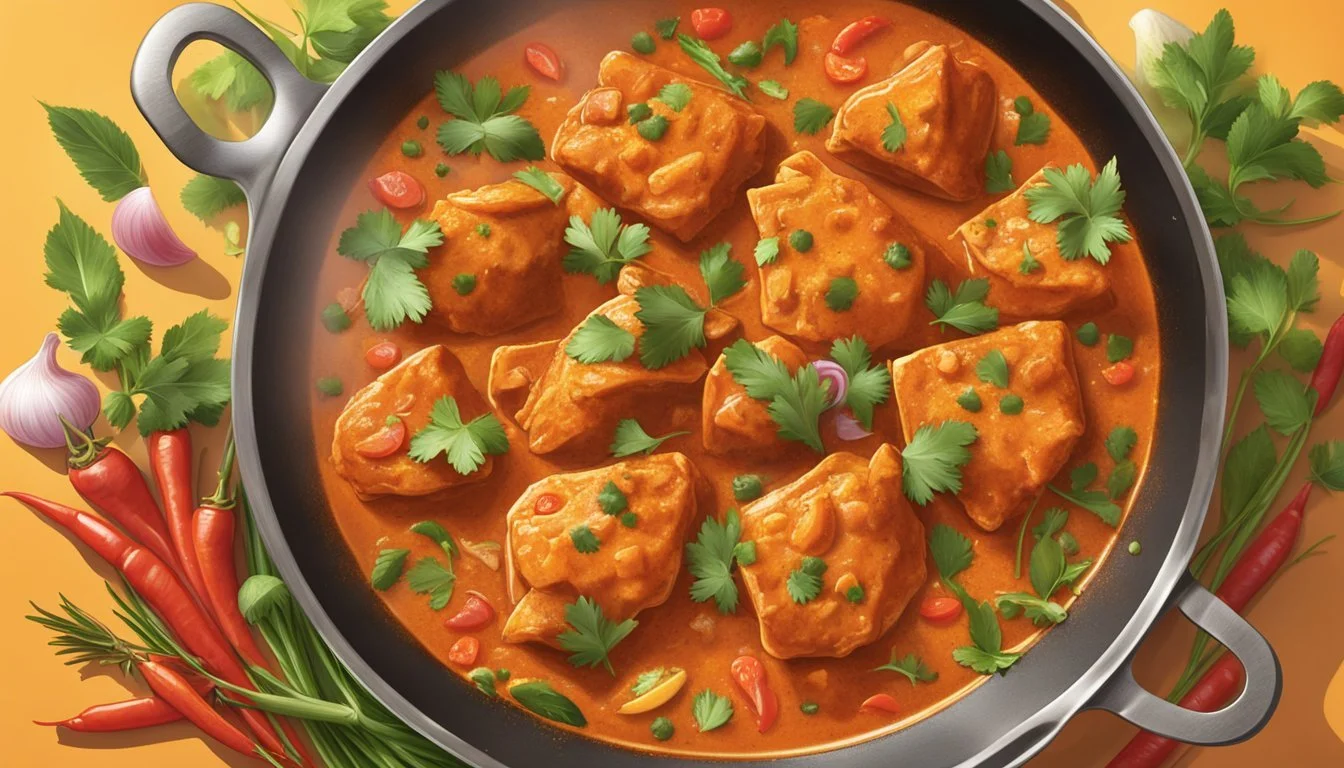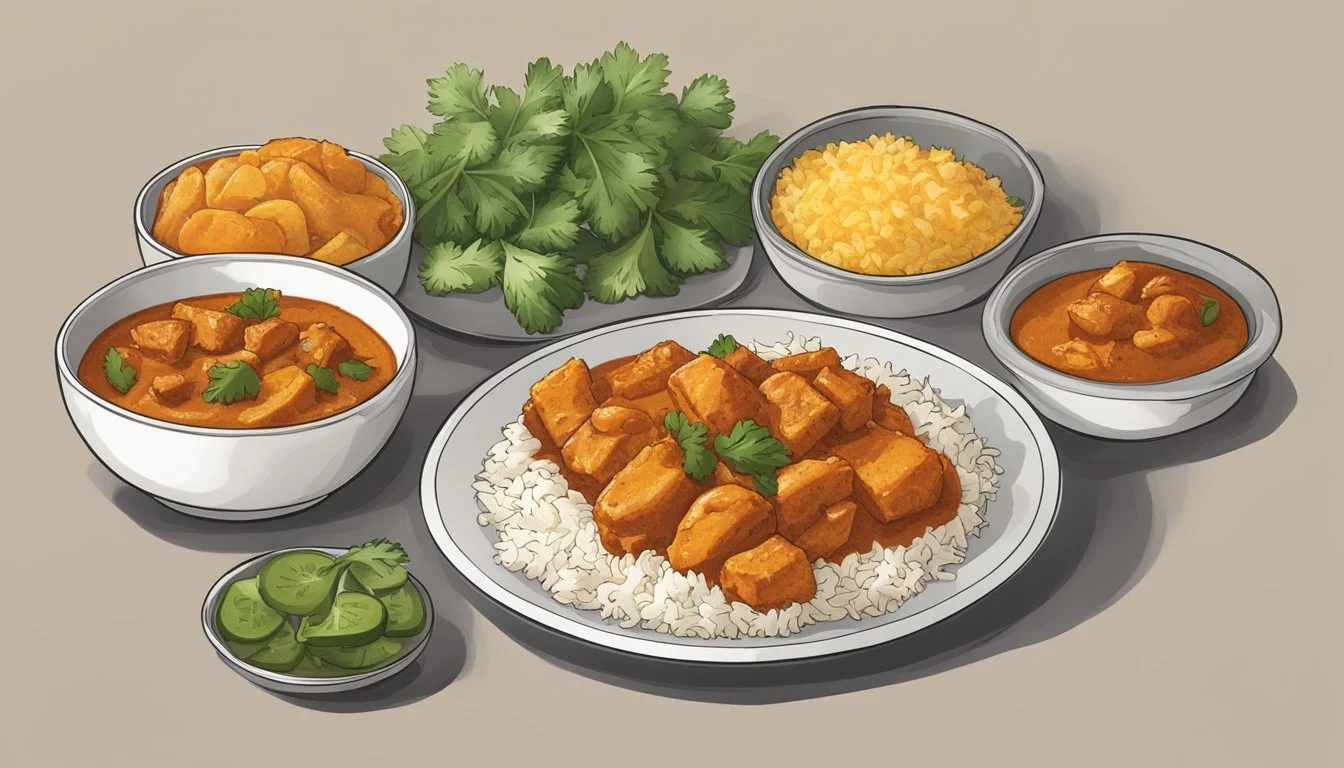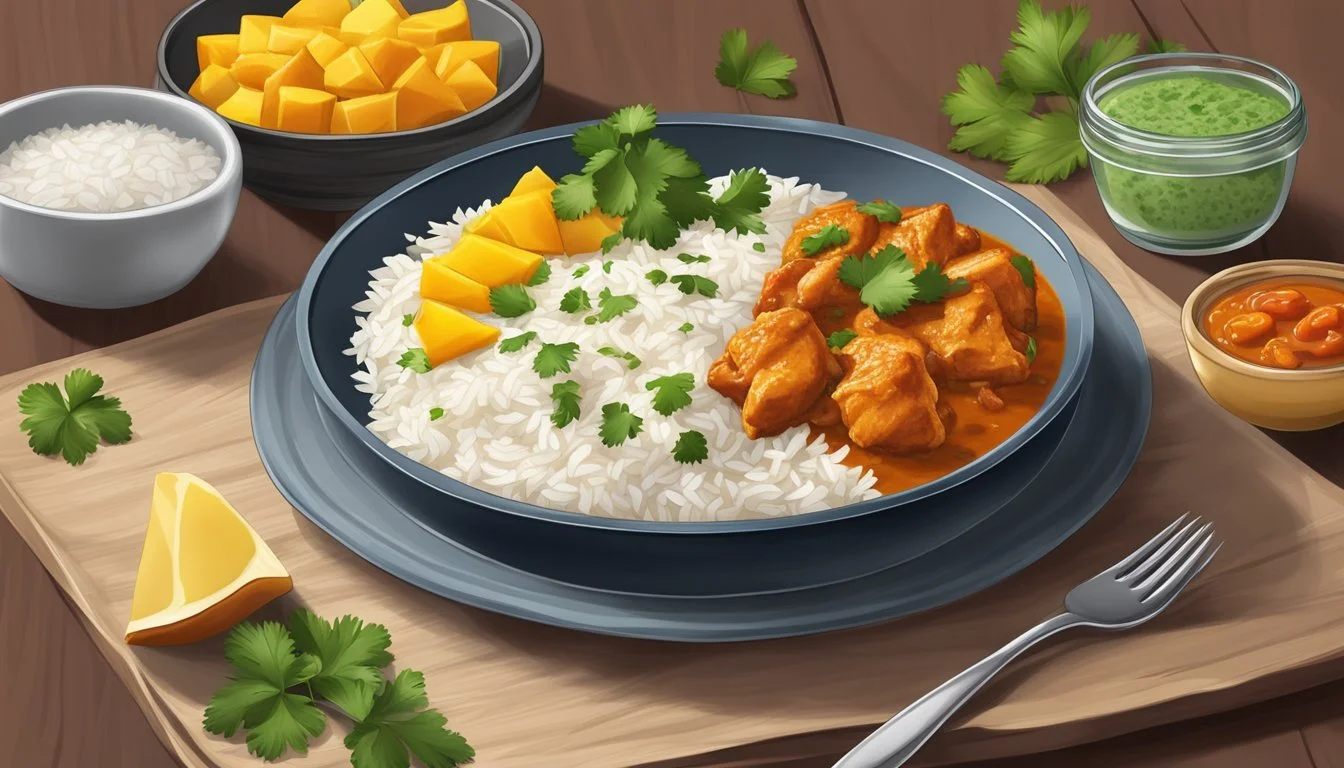How Long Does Gluten-Free Chicken Tikka Masala Last?
Safe Storage Tips
For those who enjoy the rich flavors of Indian cuisine, chicken tikka masala remains a beloved favorite. Made succulent and flavorful with a blend of spices, the gluten-free version of this dish offers a delightful dinner option for those with dietary restrictions. A well-prepared, homemade gluten-free chicken tikka masala can last in the fridge for up to 3 days, provided it’s stored in an airtight container.
reserving the vibrancy and authenticity of the homemade recipe is key to enjoying this dish multiple times without compromising on taste. For longer storage, freezing single-serving portions can be a practical and delicious solution, extending the dish's shelf life significantly. Reheating is simple, and ensures you can savor the creamy, spiced flavors even on the busiest of days.
Understanding how to properly store and reheat gluten-free chicken tikka masala ensures that you’ll always have a mouthwatering meal ready to go. This article will guide you through practical tips and techniques to keep your dish as fresh and tasty as when it was first made. Dive in and discover how easy it is to maintain the best of this authentic Indian food in your kitchen.
Understanding Chicken Tikka Masala
Chicken Tikka Masala is a popular Indian dish known for its rich, creamy tomato-based sauce and aromatic spices. It showcases a unique blend of ingredients and has gained worldwide appeal.
Historical Context and Popularity
Chicken Tikka Masala originated in India and emerged from the traditional method of cooking marinated chicken (tikka) in a tandoor (clay oven). Over time, it evolved with the addition of a creamy, tomato-based sauce, which is not originally part of Indian cuisine.
It gained major popularity in Britain, where some suggest it may actually have been invented. This cross-cultural dish quickly spread globally, becoming a staple in many Indian restaurants worldwide.
Key Ingredients and Flavors
Chicken Tikka Masala features marinated chicken pieces cooked to tender perfection. The marinade typically includes yogurt and spices such as cumin, coriander, and garam masala.
The sauce is made with tomatoes, cream, and a blend of spices, including ginger, garlic, and garam masala. These ingredients give it a rich texture and complex flavors, balancing creaminess with the tang of tomatoes and warmth of spices. Fresh cilantro often garnishes the dish, enhancing its flavor and visual appeal.
Ingredients and Substitutes
This section will detail important considerations when selecting ingredients for gluten-free chicken tikka masala, including potential substitutes for dairy and meat alternatives.
Gluten-Free Considerations
When preparing gluten-free chicken tikka masala, it's crucial to ensure all ingredients are free of gluten. This includes checking labels for spice mixes that might contain gluten as fillers. Pre-packaged spice mixes can be convenient but might be contaminated. Opt for individual spices like cumin, paprika, and garam masala instead.
Avoid cross-contamination by using clean utensils and surfaces. Use fresh ginger, garlic, and onions to control the gluten content better. Always verify that tomato paste, yogurt, and other ingredients are certified gluten-free to maintain the integrity of the dish.
Alternative Dairy Options
For those who need a dairy-free version of chicken tikka masala, several alternatives exist. Instead of heavy cream, coconut milk works well, providing a rich and creamy texture while adding a distinct flavor. Dairy-free yogurt made from almond or soy can replace traditional yogurt in marinades.
Dairy-free spreads can replace butter when sautéing onions and spices. These substitutions help maintain the creamy consistency and traditional taste of chicken tikka masala without compromising on dietary restrictions.
Meat Alternatives
While chicken thighs or chicken breast are traditionally used, alternatives can cater to different dietary preferences. Tofu is a great protein-rich vegetarian option. It's best to press and marinate tofu to absorb the flavors well.
Cauliflower can also serve as a meat substitute, giving a hearty texture while absorbing the rich sauce. Paneer is another alternative, though it is not suitable for those avoiding dairy. When using these substitutes, follow the same seasoning and cooking methods to ensure the taste remains authentic.
Preparation Method
Preparing gluten-free chicken tikka masala involves marinating the chicken and using specific cooking techniques to achieve the best results.
Marinating the Chicken
Marinating is a crucial step in making chicken tikka masala. To start, chicken thighs or breasts should be cut into bite-sized pieces. In a medium bowl, combine yogurt and cornstarch. This mixture helps tenderize the chicken and enhances the flavor absorption. Add seasonings such as garam masala, paprika, cumin, and salt to the yogurt blend.
Once the marinade is ready, coat the chicken pieces thoroughly. For optimal flavor, allow the chicken to marinate for at least 4 hours, ideally overnight, in the refrigerator. This extended marinating time ensures the spices penetrate deeply into the meat.
Cooking Techniques
Several cooking techniques can be employed to cook the marinated chicken. One common method is grilling. Preheat a grill or a cast iron skillet over medium-high heat. Cook the chicken pieces until they are slightly charred and cooked through, about 6-8 minutes per side.
Another method involves frying. Heat oil in a large skillet over medium heat. Add the marinated chicken in batches and fry until browned and cooked, approximately 5-7 minutes per batch. Ensure each piece is evenly cooked and tender.
For those preferring convenience, using a pressure cooker is a time-saving option. Start by sautéing onions, garlic, and ginger. Then add the marinated chicken and spices. Cook under pressure for about 15 minutes.
Each kitchen technique offers a unique flavor and texture, making the dish versatile and adaptable.
Serving Suggestions
When serving gluten-free chicken tikka masala, it's essential to consider suitable accompaniments and how to present the dish to enhance the dining experience. These tips will help you create a balanced and visually appealing meal.
Accompaniments
Rice: Gluten-free chicken tikka masala pairs excellently with various types of rice. Basmati rice is a popular choice due to its fragrant and fluffy nature. Brown rice offers a more nutritious option with a slightly nutty flavor. For a more aromatic experience, consider pilau rice, which is seasoned with spices like cumin and cloves.
Naan: Although traditional naan contains gluten, gluten-free naan is available and can be a delightful addition. Serve warm and slightly crispy naan on the side to mop up the rich, creamy sauce.
Side Dishes: Enhance the meal with side dishes such as cucumber raita, which provides a refreshing contrast to the spiced chicken. A simple salad made with cucumbers, tomatoes, and red onions dressed with lemon juice and topped with fresh cilantro can also work wonderfully.
Presentation
Serving Vessels: To elevate the presentation, serve the chicken tikka masala in a wide, shallow bowl that allows the vibrant colors and textures to be visible. Using traditional dishes such as copper bowls can add an authentic touch.
Garnishes: Garnish with a sprinkle of freshly chopped cilantro for added color and a burst of freshness. A squeeze of lemon juice just before serving can brighten up the flavors.
Arranging Accompaniments: Arrange the rice in a neat mound on the plate, leaving space around the edges for the chicken tikka masala. Place the naan on a separate dish or a small side plate, optionally brushing it with ghee or butter for extra flavor.
Additional Touches: Consider serving the meal with small bowls of chutneys or pickles for added flavor complexity. Decorate the table with simple elements like a bowl of whole spices or a small potted herb to enhance the dining experience visually.
Storage and Shelf Life
Proper storage is essential to ensure that gluten-free chicken tikka masala remains safe to eat and retains its flavor. Following specific techniques can help extend its shelf life. Understanding how to store it properly can prevent waste and ensure a delicious meal later.
Proper Storage Techniques
For refrigeration, place leftovers in an airtight container to prevent contamination and moisture loss. It's best to refrigerate the dish within two hours of cooking to keep it safe for consumption, especially important for individuals with celiac disease.
Freezing can extend storage significantly. Freeze the dish in single-serving portions in labeled containers, indicating the date. This helps in keeping the track of storage time and eases portion control during reheating. Thaw in the refrigerator overnight before reheating on the stovetop or microwave.
Reheating should be done gently. Reheat on the stovetop on low heat or use a microwave at medium power to avoid drying out the sauce.
Shelf Life Expectancy
In the refrigerator, gluten-free chicken tikka masala lasts about 3 to 4 days when stored properly. Ensure the temperature remains below 40°F to prevent bacterial growth.
When frozen, the dish can be safely stored for up to 3 months. Proper labeling and adhering to these timeframes help ensure food safety.
Once thawed, any leftovers should be consumed within 24 hours and not refrozen to maintain quality and safety. Sticking to these guidelines ensures that one can enjoy the meal without compromising health.
Health and Nutrition
When preparing gluten-free chicken tikka masala, it is essential to consider its nutritional content and its effects on those with gluten sensitivities or celiac disease.
Caloric and Nutritional Breakdown
A typical serving of gluten-free chicken tikka masala contains various essential nutrients. Calories range from 300 to 400 per serving depending on ingredients used.
Chicken provides a significant amount of protein, crucial for muscle repair and maintenance. Each serving can contain around 25-30 grams of protein. The dish has about 20-25 grams of total fat, stemming from sources like butter, ghee, or oil used in cooking.
Sodium content can be high, around 800-1000 milligrams per serving, primarily from added salts and spices. It's vital to manage this if dietary restrictions for sodium are in place. The sugars content is generally low, typically under 5 grams per serving, making it suitable for those monitoring sugar intake.
While it’s important to check specific brands and ingredients, this dish also provides vitamins and minerals from garlic, ginger, and spices, contributing to its nutritional value.
Celiac Disease and Gluten Sensitivities
Gluten-free chicken tikka masala is suitable for individuals with gluten sensitivities or celiac disease. Ingredients like gluten-free yogurt and gluten-free spices ensure the dish is safe and free from contamination.
For those with celiac disease, even trace amounts of gluten can cause severe reactions, making it critical to use dedicated gluten-free cooking utensils and surfaces. Using gluten-free substitutes for any ingredient that typically contains gluten is necessary to prevent any adverse health effects.
Care should be taken to verify that all spices, sauces, and thickeners are certified gluten-free. This attention to detail helps maintain a gluten-free diet and avoid cross-contamination, which is essential for managing both gluten sensitivities and celiac disease.
Social Aspects and Trends
In recent years, gluten-free chicken tikka masala has taken a prominent place in modern culinary scenes, impacting cultural interactions and digital communication significantly.
Cultural Impact and Appeal
The cultural significance of chicken tikka masala extends beyond its Indian origins. It has become a staple in many international cuisines, with gluten-free variations appealing to those with dietary restrictions.
Restaurants around the globe now offer gluten-free versions, showcasing the dish's enduring authentic appeal. This adaptation not only respects traditional recipes but also makes the dish accessible to a wider audience. Moreover, gluten-free chicken tikka masala is often highlighted in Indian cuisine festivals, bridging gaps between diverse dietary preferences and maintaining cultural integrity.
Social Media and Recipe Sharing
The rise of platforms like Instagram has greatly influenced the popularity of gluten-free chicken tikka masala. Food bloggers and influencers share visually appealing recipes, making it easy for fans to recreate the dish at home.
Recipe-sharing communities actively engage in discussions about ingredient substitutions and cooking techniques. This trend is not just limited to home cooks; numerous restaurants showcase their gluten-free variations, gaining followers and enhancing their digital presence. The availability of instructional videos and step-by-step guides further democratizes access to this beloved dish.






